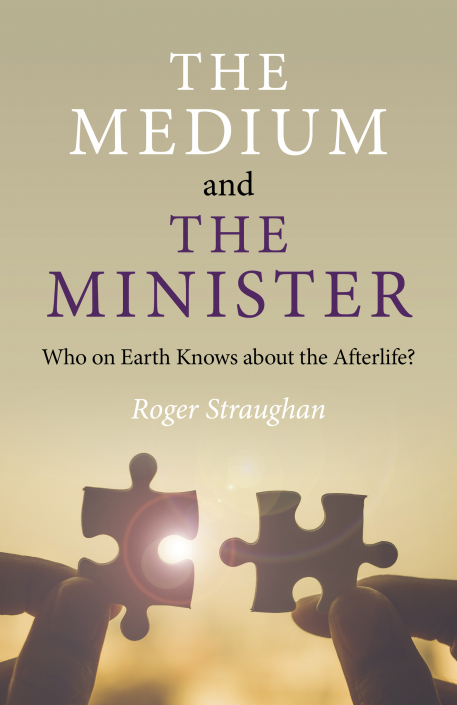
Reviewed by Melvyn Willin
Roger Straughan has had a long-standing career as a teacher which culminated in the post of Reader in Education at the University of Reading, UK. He has published a number of other books. The back cover claims that this book “explores psychical and religious approaches to the possibility of an afterlife” with case studies illustrating the “tensions and conflicts” between the two approaches. The opening pages are devoted to praiseworthy comments by Tricia J. Robertson, David Taylor and Trevor Hamilton followed by an introduction and eighteen fairly brief chapters. References are provided, but there is frustratingly no index.
The introduction immediately puts one at ease since the author’s aim is not to provide conclusive answers which are “probably impossible”, but instead to explore the various arguments to allow readers to make up their own minds. Commendable!
The first chapter Why Bother About an Afterlife? sets out the balance between living a life totally centred on the present followed by disintegration and living a life expecting something to survive bodily death. Straughan continues with chapters providing a range of alternatives and the pros and cons of the arguments presented. Religions, including a separate chapter on Spiritualism, are explored followed by the “challenge” of psychical research. He draws attention to both the Society for Psychical Research (SPR) and its American counterpart’s (ASPR) aspirations to be scientific bodies nurturing critical examination of all phenomena even if they initially seemed incredible. This may have been the case with the example of Sir Oliver Lodge’s son Raymond who communicated through a medium describing how in the transitional period after death such activities as cigar-smoking took place.
Sir Arthur Conan Doyle receives a brief chapter to himself outlining his belief in the afterlife, which might have been extended since Straughan had already written extensively about him (see Straughan, 2009). The bizarrely named following chapter Two Knights on a Mission outlines Doyle and Lodge’s links between their mission and religious convictions.
Attention is drawn to “The Church under threat” notably during and after the carnage of the First World War and this theme is continued with views about the Church’s divisions during this time. It was disappointing not to receive a reference for a particularly striking example of a wartime apparition that is recounted (pp. 47-48). The Cosmo Lang report on the investigation of communication with discarnate spirits is given a useful description even if the author’s use of language: “someone blew the gaff and there was a leak” is somewhat colourful!
The book does not solely concentrate on the Church’s attitude to survival, but also gives prominence to the evidence from mediumship with sections on Eileen Garrett and the R101 disaster, the Cross Correspondences, the Palm Sunday Case and the ‘Swan on a Black Sea’ scripts. An attempt to bridge the gap between the religious and psychical approach is explored through a chapter devoted to the initiative of Lieutenant-Colonel Reginald Lester (1952), whose book In Search of the Hereafter attempted to instigate some sort of balance. The early history of the Churches Fellowship for Psychical Study is given and its continuation from 1963 as the Churches Fellowship for Psychical and Spiritual Studies (CFPSS). A colourful character from this period was the “heretical” bishop James Pike who challenged the Church’s attitudes on a number of subjects and notably the afterlife.
The book returns to the mediumistic approach with a welcome section about the work of Robert Crookall who devoted his life after retirement as a geologist to the study of psychical research and survival. The testing of mediums is outlined through the work of Archie Roy, Tricia Robertson and Gary Schwartz. Evidence is presented from the investigation of the ‘Scole Group’ undertaken by David Fontana, Montague Keen and Arthur Ellison. Having attended a Scole sitting I am forced to disagree with the author’s declaration that phenomena was witnessed “under tight control” as I would argue that pitch-black darkness did not necessarily exemplify “tight” control and the statement that “no hint of deception was ever detected” would not be agreed with by several sceptical researchers of the case.
Survival research is further explored by the author outlining the work of the medical doctor Dewi Rees, Near-death Experiences (NDEs), Electronic Voice Phenomena (EVP) and Instrumental Transcommunication (ITC). The work of David Fontana and Anabela Cardoso is highlighted with useful information.
The final concluding chapters of the book present a welcome recapitulation of the case for psychical and religious sources as well as the strength of personal testimony in the quest for the afterlife. The author makes a few personal suggestions as to what may happen post-death, but ultimately he leaves the answer up to the reader to decide.
I like this book. It is written in a style that makes it comfortable and informative to read, without having to reach for a glossary to understand technical terms that too often flood parapsychological works. The author presents the facts and leaves the reader to decide how to interpret them. His final statement quotes the words of Arthur Balfour, a former Prime Minister and President of the Society for Psychical Research:
Our highest truths are but half-truths,
Think not to settle down for ever in any truth,
Make use of it as a tent in which to spend a summer’s night,
But build no house of it, or it will be your tomb.
References
Lester, R. M. (1952). In Search of the Hereafter. London: George G. Harrap & Co.
Straughan, R. (2009). A Study in Survival: Conan Doyle Solves the Final Problem. Hants: O Books.

